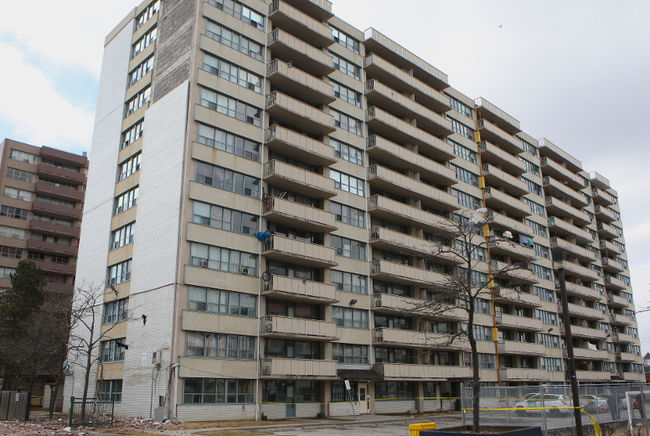by Harshita Singh
“Two people have been killed since I moved in here. Of course I feel unsafe. I feel more safe in the street than in my home.”
This is how Maryam*, a woman in her early twenties and a three-year resident of 3171 Eglinton Avenue—one of the TCHC high-rises at the intersection with Markham Road—describes her life in the building.
“I don’t feel comfortable inviting friends over. Once a friend spent the night, and at two a.m. someone started banging on the door demanding to come in. How are two women alone in an apartment at that hour going to feel?”
Of the dozens of residents at 3171 with whom BASICS has spoken, nearly all have similar concerns about safety. For female residents in particular, the greatest feeling of threat can sometimes come from other residents—in particular, men. Such feelings are common for women who, like Maryam, live alone or as single mothers.
Due to the seeming lack of other choices, some residents turn to the police. For example, after racist curses were scratched onto her door a few months ago, Maryam immediately informed the Toronto Police Service. When constables came by, however, she found them unwilling to pay even cursory attention to the situation: “When I told them about these words someone had written and asked them what they were going to do, one of them just shrugged and said, ‘It’s TCHC’.”
The cop’s indifference to Maryam’s concerns reflects the attitude of the police department towards the concerns of low-income residents. After the murder of 22 year-old Dillon Phillips in the stairwell on September 2014, a second resident recalls the police and TCHC management as encouraging residents to “Take back your building”. In such circumstances, residents and onlookers are forced to ask whether the police are in place to protect or divide communities.
Trapped between a rock (insecurity) and a hard place (disdain and disinterest from the police), Maryam’s only goal is to get as far from community housing as possible. “I don’t hang out in the area, I don’t want to be here. When I’m gone, I’ll never think about this place again,” she said to BASICS.
For a woman in her position, this view is entirely reasonable, and it is one which many women in the building seem to share. Yet when residents are lucky enough to get a transfer or start making enough money to move out, their apartments will immediately be filled by a few more people from TCHC’s 160,000-household waiting list. New residents, as well as the many who are unable to leave, are simply forced into the same stressful, unchanging, and sometimes dangerous circumstances. Unable and uninterested in providing a secure home, TCHC and the Toronto Police Service bring TCHC residents to see their apartments as places where fear and suspicion are constant.
When asked if her concerns about security cause alienation from other residents, Maryam said, “Definitely.” In a building where turnover is high, security is low, and many wish to leave, it is difficult for residents to build a sense of trust in the community.
Yet the police prove, as they did in Maryam’s case, that they have little interest in protecting working-class and racialized women—and this is without any discussion of police treatment of working-class and racialized men.
Under these circumstances, who better for female residents to turn toward than one another? Protective links already exist in small, informal ways—between friends, for instance. But if these links could turn into something larger and more organised, a safer and more inclusive community for women—and perhaps also men—at 3171 Eglinton could take shape.
*At her request, we have given Maryam a pseudonym for this article.
(Photo Credit: Chris Doucette, Toronto Sun)
Comments
